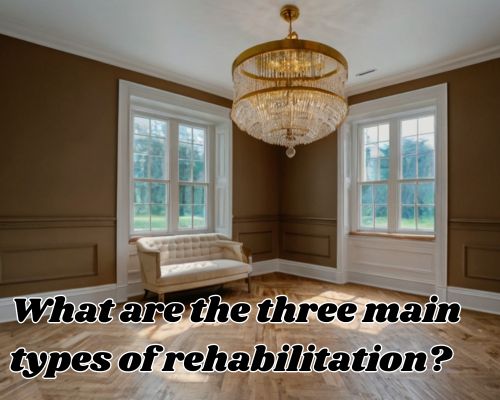When discussing rehabilitation in architecture, it’s essential to recognize its significance in preserving heritage, optimizing urban spaces, and ensuring sustainability. In Mornington, Australia, where a blend of historical charm and modern development thrives, architectural rehabilitation plays a crucial role in maintaining the region’s aesthetic and functional appeal.

Architectural rehabilitation consists of three main types: preservation, restoration, and reconstruction. Each of these methodologies serves a distinct purpose and applies to various structures, from heritage-listed buildings to contemporary urban developments. Understanding these concepts is vital for architects, developers, and local authorities seeking to enhance the built environment in Mornington and beyond. Let’s get on to this with Mornington Cabinet Makers.
1. Preservation: Protecting Architectural Integrity
Preservation focuses on maintaining a structure in its existing form, preventing further deterioration while ensuring its historical, cultural, and functional aspects remain intact. In places like Mornington, where coastal properties and heritage buildings dot the landscape, preservation safeguards architectural identity.
Key strategies in preservation include:
- Structural reinforcements: Strengthening foundations and load-bearing elements to extend longevity.
- Material conservation: Using traditional materials and construction techniques to uphold authenticity.
- Preventive maintenance: Regular inspections and repairs to mitigate environmental damage, particularly from Mornington’s coastal climate.
A prime example of preservation in Mornington is the Mornington Railway Station, a heritage-listed site that has been maintained to reflect its historical significance while still serving as a functional landmark.
2. Restoration: Bringing Buildings Back to Their Original Glory
Restoration involves returning a structure to a specific period by removing later additions or repairing missing elements. This approach is often applied to heritage buildings or structures of historical importance in Mornington’s town center and surrounding suburbs.
Restoration efforts typically include:
- Reinstating original features: Replacing lost or altered components with period-accurate materials.
- Removing incompatible modifications: Eliminating later additions that compromise historical integrity.
- Matching architectural styles: Ensuring that all repairs and replacements conform to the original design.
One notable restoration project in Mornington is the Schnapper Point Pier, where timber and maritime elements were carefully restored to preserve the area’s rich history while accommodating modern visitors.
3. Reconstruction: Rebuilding with Historical Accuracy
Reconstruction is the process of recreating a demolished or significantly deteriorated structure to its original form. This technique is often used when buildings have been lost due to disasters, neglect, or urban redevelopment.
Key components of architectural reconstruction include:
- Archival research: Studying historical documents, photographs, and blueprints to ensure accuracy.
- Material replication: Using original or similar materials to reconstruct lost elements.
- Adaptive reuse: Integrating modern features while maintaining the essence of the past.
Mornington has seen several reconstruction efforts, particularly in areas affected by coastal erosion. The Reconstruction of Mornington Pier exemplifies this approach, combining heritage aesthetics with durable materials to withstand modern climatic challenges.
The Role of Architectural Rehabilitation in Mornington’s Development
Mornington’s urban and suburban landscape presents an excellent opportunity for thoughtful architectural rehabilitation. Whether through preservation, restoration, or reconstruction, these methodologies contribute to sustainable development and community enrichment.
Why Architectural Rehabilitation Matters in Mornington
- Cultural Significance: Maintaining landmarks and historic buildings strengthens the local identity.
- Sustainable Development: Rehabilitating existing structures reduces waste and conserves resources.
- Economic Benefits: Preserved and restored buildings attract tourism and investment, boosting the local economy.
For more, visit https://morningtoncabinetmakers.com.au/.
Conclusion
Understanding the three main types of rehabilitation in architecture—preservation, restoration, and reconstruction—is crucial for protecting and enhancing Mornington’s built environment. As the region grows, implementing these architectural strategies ensures that heritage sites, coastal properties, and urban developments remain structurally sound, historically authentic, and environmentally sustainable.
For property owners, architects, and developers in Mornington, embracing architectural rehabilitation is not just about preserving the past—it’s about shaping a sustainable and culturally rich future.